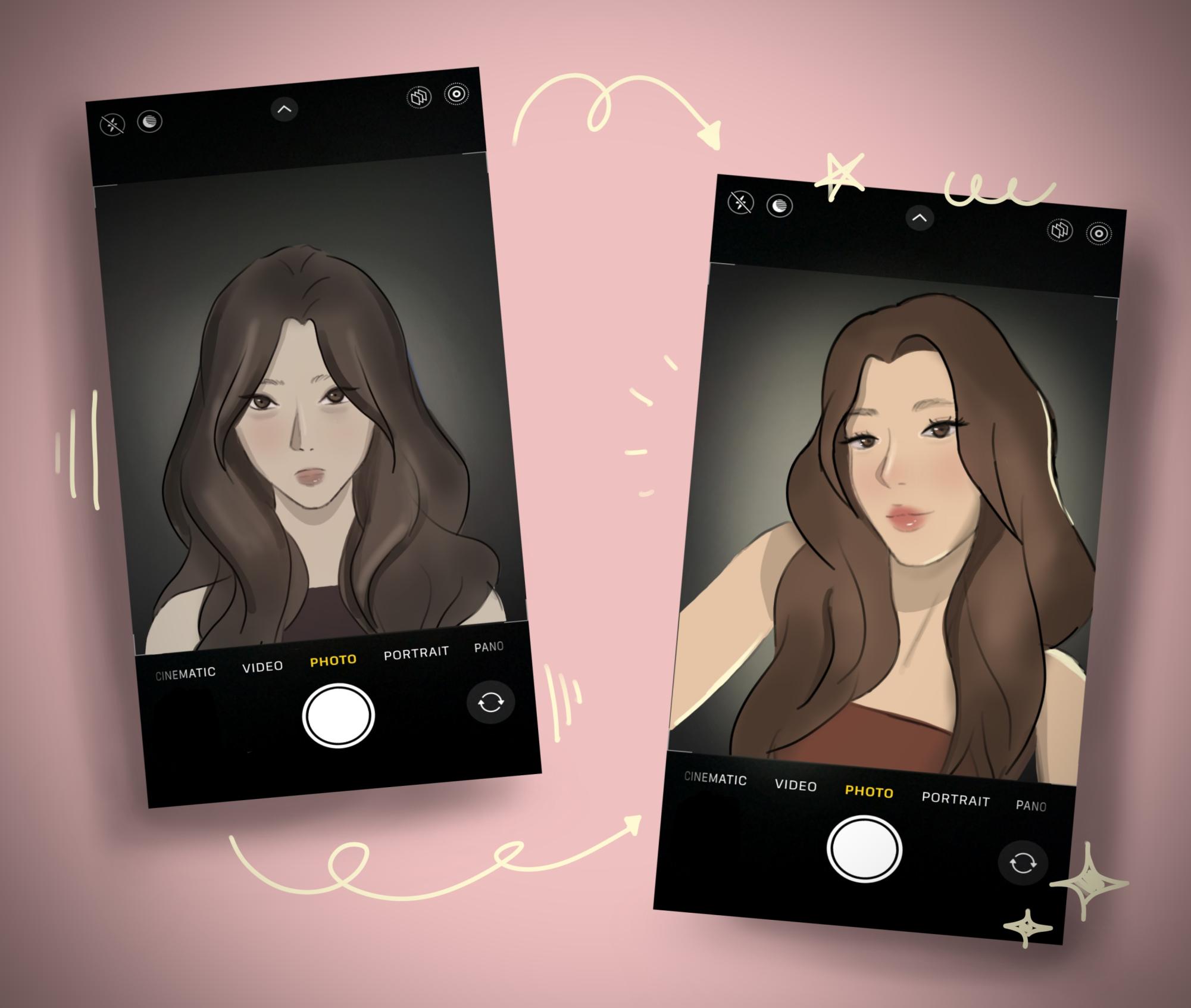If someone asked if you were photogenic, you would probably respond negatively right away. With society’s high-resolution cameras and hyper-fixation on social media, we’re rarely satisfied with our appearance in pictures.
Even so, the notion of photogenicity is an illusion, a construct defined by lighting, flattering angles and filters. The pasty skin and double chins that make you the “ugly duckling” in a group photo aren’t signs of being unphotogenic. Rather, they arise from psychology and our natural tendency to be self-critical.
Photogenicity is the idea of looking effortlessly attractive in photographs or on film. Countless photographers online offer advice for becoming more photogenic, including practicing poses, finding flattering angles, improving lighting and adopting a relaxed expression.
The number of steps that must be taken to appear effortlessly attractive in photos illustrates the mirage of photogenicity. If looking good in pictures were truly innate, an extensive list of photographing techniques wouldn’t be necessary. The complexity of these steps highlights that being photogenic is more of a fabrication than a natural characteristic, a carefully crafted illusion rather than a simple truth.
One could argue that, even when a group photo is taken at the same time with identical angles and lighting, they will still appear less attractive than a “naturally beautiful” friend. Contrary to common belief, this discrepancy is not the result of beauty or photogenicity. Instead, psychological biases and individual perceptions frequently shape our negative interpretations of ourselves.
When looking at a group photo, most of us tend to search for and recognize our own faces first. The National Library of Medicine (NLM) highlights our obsession with ourselves in the self-reference effect, or the idea that information related to oneself is remembered more effectively. This is also reflected in the discovery that people tend to respond faster to their own faces than to others.
NLM outlines two categories of facial recognition: self-face and other-face. Self-face recognition is the detection of our own face, while other-face is the recollection of other’s faces. Self-face memory is the idea that our mental vision of ourselves seems more attractive than our actual appearance. Thus, when we compare our idealized self-image with our face in photos, the latter is considered less attractive.
The cognitive dissonance theory is closely intertwined with these concepts. The theory suggests that we experience discomfort when our preconceived notions don’t align with our reality, inducing self-judgment as a result.
When confronted with a picture that fails to match our internal, more flattering self-image, we are faced with cognitive dissonance, catalyzing a cycle of self-judgment and self-criticism as a method of reconciling the disparity in our appearance.
Mirrors often enter the conversation about photogenicity. Many wonder why they appear more attractive in the mirror than in photos. The answer lies in the simple truth that mirror images are reflections, not true representations, and fail to capture the subtleties of features that determine how others see us.
After repeatedly assessing ourselves in photos and concluding that we look like the bad apple in the basket, we come to believe that we are not photogenic.
These preconceived notions contribute to confirmation bias, a psychological concept that reveals our tendency to seek out information that supports our previously held beliefs. When we perceive ourselves to be unphotogenic, we fall into this trap of confirmation bias by searching for features in our face that trick us into believing we appear unattractive in pictures. Thus, confirmation bias and other psychological factors mislead our view of ourselves in photos, furthering the notion that photogenicity is nothing more than a self-deprecating attitude adopted by our minds.
The illusion of photogenicity unveils our complex relationship with self-image and perception. Cognitive biases and distorted self-perceptions can warp our view of ourselves.
Understanding that photogenicity is not an inherent trait but a construct defined by lighting, angles and psychological factors can help us appreciate the true nature of our appearance.
By challenging these illusions, we can work toward a more compassionate and realistic self-view that liberates us from the pursuit of an unattainable ideal.




